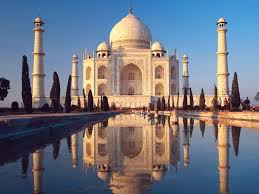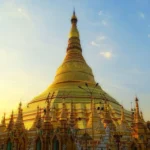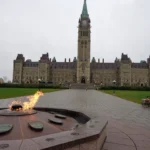
The Taj Mahal is a famous mausoleum in India.
A mausoleum is a building that contains burial chambers (tombs) for the deceased, they can be large or small and are often created in honor of influential people.
The Taj Mahal is located in Agra, a city in the Uttar Pradesh region of northern India.
It was built as the final resting place for Mumtaz Mahal, the third wife of Mughal emperor Shah Jahan.
The name Taj Mahal means “crown of palaces”.
Before his accession to the throne, Shah Jahan was popularly known as Prince Khurram.
Shah Jahan fell in love with the beautiful Arjumand Bano Begum and married her, making her his third wife.
Arjumand Bano Begum was christened by Shah Jahan as Mumtaz Mahal, meaning the “Chosen One Of The Palace” or “Jewel of the Palace”.
Shah Jahan lost Mumtaz Mahal, when she died giving birth to their 14h child.
For the transportation of the construction materials, more than 1,000 elephants were employed.
As many as 28 different varieties of semi-precious and precious stones were used to adorn the Taj with exquisite inlay work.
Depending on what time of the day it is and whether or not there’s moon at night, Taj Mahal appears to be of different color every time. Some even believe that this changing pattern of colors depict different moods of a woman.
Passages from Quran have been used as decorative elements throughout the complex.
On the sides of the actual tomb of Mumtaz Mahal, 99 names of Allah can be found as calligraphic inscriptions.
It is estimated to have taken more than 22,000 people to build this impressive building including laborers, painters, stonecutters, embroidery artists, and many others.
According to legend it is believed that Emperor Shah Jahan had planned to construct another Taj Mahal in black marble on the other side of the river but the war with his sons interrupted his plans.
The Taj Mahal takes on different coloring at different times of the day, from a pinkish hue in the morning, milky white in the evening and golden at night when lit by the moon. They say the changing color resembles the changing mood of females – in particular the Emperor’s queen.
Built in memory of the Emperors third and most favorite wife Mumtāz Mahal, the Taj Mahal took 17 years to be completed.
It is said that the death so crushed the Emperor that all his hair and beard were said to have grown snow white within just a few months.
The four sides of the Taj Mahal are perfectly identical creating an astonishingly mirrored image on each side. It uses the principles of self-replicating geometry and symmetry of architectural elements.
The Taj Mahal is surrounded by significant gardens and a number of other buildings including a mosque and guest houses which make up the 17 hectares of land within the complex walls.
The full height of the Taj Mahal is 171 metres (561 feet).
More than 1,000 elephants were employed to transport the construction materials used to build the Taj.
Many precious stones were ripped off from its walls by the British during the Indian rebellion of 1857.
Taj Mahal was built in stages, with the plinth and the tomb taking up roughly 15 years. Building of minarets, mosque, jawab, and gateway took additional 5 years to be completed.
Different types of marbles used in construction of Taj Mahal were brought over from many different regions & countries: Rajasthan, Punjab, China, Tibet, Afghanistan, Sri Lanka, & Arabia.
Many precious stones and Lapis Lazuli (a semi-precious stone) were ripped off from its walls by the Britishers during the Indian rebellion of 1857.
Taj Mahal attracts 2-4 million visitors annually with over 200,000 from overseas.
Construction of the Taj Mahal took around 20 years, beginning around 1632 and finishing around 1653.
The Taj Mahal is made of white marble.
One of the Taj Mahal’s most recognizable features is a large white dome that is often called an ‘onion dome’ due to its shape. It has a height of around 35 metres (115 feet) and is surrounded by 4 smaller domes.
The full height of the Taj Mahal is 171 metres (561 feet).
The Taj Mahal is considered to be one of India’s most admired works of art, as well as a famous landmark and a tourist attraction that draws millions of visitors every year.
The Taj Mahal complex includes a large garden, a reflecting pool, a mosque and other mausoleums.








